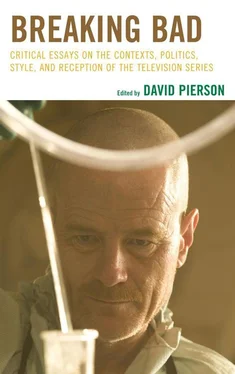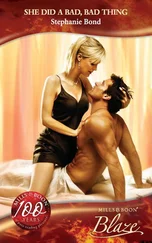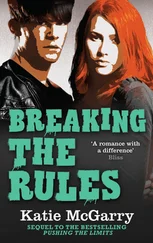Perhaps the most astonishing figures in the narrative, however, are the “Salamanca cousins” as they are referred to in the Breaking Bad lexicon. These characters, Leonel and Marco (Daniel and Luis Moncada), are hit men associated with one of the cartels. They are, in fact, brothers to each other and cousins of Tuco Salamanca. From their introduction in the first scene of season three in the episode “No Mas” (3/2/10), the Salamanca cousins do not conform to any stereotype traditionally associated with Mexicans in American popular culture: they are intelligent, dedicated, contemplative, and logical. They first appear in a small desert town driving a Mercedes, after which they get out and join a group of people crawling on their hands and knees up a hill toward a shack. Inside the shack sits a grim-reaper like figure, a skull dressed up with clothes and holding a scythe. Although it is never stated overtly in the narrative, this figure almost certainly pertains to the Santa Muerte cult. [10] For images depicting Santa Muerte, including some featuring its supplicants, see the photo essay “Santa Muerte” (2012) in Time ’s online magazine.
In that it is a hybridized collection of beliefs and rituals deriving from both European and non-European origins, Santa Muerte is not unlike Voodoo or Santeria. However, the combination here is Catholic and Meso-American, and the focus is very much upon death. Mexican culture exhibits a fascination with death, from minutiae such as the common practice of wearing skull masks to soccer matches to national holidays such as the Day of the Dead (November 1), a decidedly morbid celebration of deceased ancestors. Most narratives would not provide such insight into antagonists destined to inhabit only half a season, but Vince Gilligan complicates the depiction of the Salamanca cousins by doing just this. He humanizes them by displaying an interesting character quirk, simultaneously shedding light upon another aspect of border culture. It is interesting to note that in Santa Muerte a supplicant can ask for the death of another, so long as that death is in the greater service of justice. Leonel and Marco Salamanca believe that Walter White killed their cousin Tuco, and thus they are justified in asking for and even causing his death. It is also instructive to note that Santa Muerte also tends to be more highly patronized among the poorer sections of Mexican society, perhaps suggesting a bit of backstory for the Salamanca cousins. They are successful hit men, driving a Mercedes and dressing in fancy suits; however, they may have come from humble origins.
Even before they reach the shack and pin their drawing of White to the wall, it is clear that the Salamanca cousins will be key antagonists. The death’s head figurines on the tips of their boots and the manner in which they menacingly crawl directly toward the camera are suggestive, as is the fact that they rarely speak (indeed, between the two of them the cousins utter only about forty words over the course of seven episodes). More specifically, showing up in a dusty town driving a Mercedes and dressed in expensive suits indicates that the Salamanca cousins are somehow associated with one of the cartels. The character convention of the dapper hit man dressed in a suit is nothing new in cinema, [11] In its most famous iteration, Hong Kong filmmaker John Woo and actor Chow Yun-Fat teamed together in A Better Tomorrow (1986) and The Killer (1989) to present a professional hit man whose sartorial formality is matched only by his facility with a gun.
although it is not often associated with narratives involving the Mexican drug cartel. The manner in which the Salamanca cousins enter the United States is interesting, also serving to undermine normative stereotypes. In American television and cinema, the process of illegal entry into the United States is portrayed in a fairly narrow way. Films such as Lone Star (1996) present the crossing as traumatic, often with families making the difficult decision to leave home due to economic privation. As the crossing is often dangerous, it is usually depicted as a solemn affair, with any villainy coming in the form of profit-mongering ‘coyotes’ (those who charge money to take people across the border) or crooked members of law enforcement. The Salamanca cousins find themselves in the back of a fake hay truck, sitting across from an incredibly chatty individual. This character is a body shop worker who once painted cars for gangsters in Michoacán, theoretically members of one of the area’s cartels. Whatever the affiliation, this character recognizes that the Salamanca cousins are gangsters, and in response they not only kill him but also the other nine passengers as well as the driver of the truck.
The complexity of border crossings is also manifest in a very brief scene that takes place after the Salamanca cousins cross the U.S.-Mexico border. As it turns out, there are other physical borders that exist. Numerous indigenous tribes, all of them situated on land contained within but separate and distinct from the United States, populate the desert portions of the American southwest, a fact that most border narratives ignore. In the brief scene that opens the episode “Sunset” (4/25/10), a tribal police officer on an unnamed reservation investigates why a woman has not been answering her phone. The reason is that the Salamanca cousins have killed her and taken over her house as their base of operations. This short scene, which only represents about three minutes of screen time, introduces yet another layer to the geopolitical complexity of this narrative. On reservation land, the rules and regulations of the United States do not apply, and state and federal law enforcement officials such as Hank Schrader do not have jurisdiction. In many ways, due to its rural setting and lack of federal oversight, the Salamanca cousins have found a good place to hide out, one where even the intense scrutiny focused upon other areas of the border region is not a given. Although it does not appear to be the case in this situation, tribal surnames in such areas are often Spanish instead of English. Just as Fring establishes the fact that not all Latin Americans who pass from Mexico to the United States are Mexican in origin, so too does the reservation complicate the notion of ‘borders’ within the American southwest.
There are a few minor characters that also contribute to the series’ complex and highly variable portrayal of the Mexican drug cartels. Hector Salamanca is wonderfully layered as a character; formerly a major capo for Don Eladio, he is now confined to a wheelchair following a stroke. In his heyday, he was quite powerful and was the capo who killed Fring’s partner Max. However, he is now reduced to communicating by ringing a bell. When he is first introduced, Hector succeeds in keeping White from killing Tuco after he notices the former putting poison in Tuco’s food. Later, after Tuco is killed by Schrader, Hector refuses to give up White as the drug manufacturer though they have become enemies, even going so far as to release his bowels so that the police will stop interrogating him. The only reason Hector saves White is so that he can have his nephews, the Salamanca cousins, track down and kill him. At the end of season four, however, in the episode “Face Off” (10/9/11), Hector allows White to strap a bomb to his wheelchair, identifying Fring as a greater villain and realizing this will be his only chance to once again become proactive and kill one of his enemies (he does so by triggering the bomb’s switch with his bell). Hector may be violent, but he is also intelligent and, in the end, sacrificial. Another member of the cartel that does not fit the profile of a drug gangster is Tortuga (Danny Trejo). Instead of a mindless killer, Tortuga is an alcoholic, self-styled philosopher who has agreed to pass information along to the DEA. His decapitation in the episode “Negro y Azul” (4/19/09) definitely pushed the boundaries of television violence, but it also brought a moment of sobering reality to what is otherwise a fictional narrative. During the Mexican Drug War, which has raged since late 2006 through this book’s delivery to press, tens of thousands of Mexicans have been killed as various cartels fight not only the Mexican military and police but also each other over trafficking corridors to the United States (O’Reilly 2012). [12] Although by late 2012 the total number of fatalities in the war had usually been set at just over 50,000, a recent study by Molly Molloy at New Mexico State University puts the number at closer to 100,000 (O’Reilly).
Many of these killings involved beheadings, a signature used by the cartels to humiliate the victims while simultaneously threatening their families and friends.
Читать дальше












